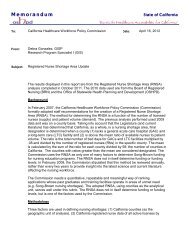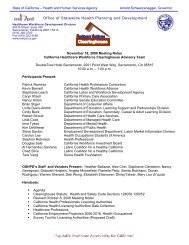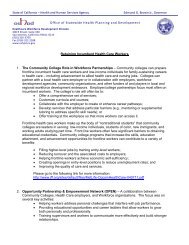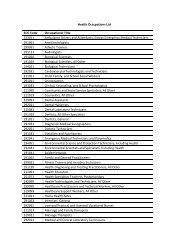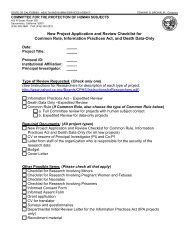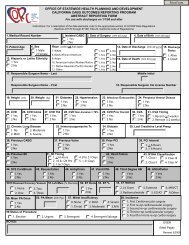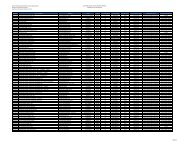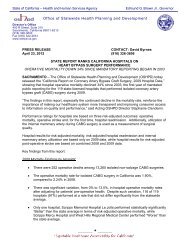Best Practices for Project Management, Design, and Construction of ...
Best Practices for Project Management, Design, and Construction of ...
Best Practices for Project Management, Design, and Construction of ...
You also want an ePaper? Increase the reach of your titles
YUMPU automatically turns print PDFs into web optimized ePapers that Google loves.
Logging Inspection Requests<br />
1. When an inspection request is received, it should be date-stamped <strong>and</strong> initialed by the<br />
IOR.<br />
2. The IOR keeps the original inspection request in a binder with a log showing the request,<br />
date received, date inspection requested, date executed, trade requesting, <strong>and</strong> approval<br />
or rejection. After updating the log, the IOR shall make a copy <strong>and</strong> post it outside the IOR’s<br />
or contractor’s <strong>of</strong>fice <strong>for</strong> subcontractors <strong>and</strong> contractors to view.<br />
3. After completing the inspection <strong>and</strong> filling out the <strong>for</strong>m, the IOR makes a copy <strong>of</strong> the<br />
original <strong>and</strong> places it in the outgoing mail. If an inspection is rejected, a copy <strong>of</strong> the<br />
rejection should be given to the contractor in person or by fax. The original is retained by<br />
the IOR in the binder.<br />
Other <strong>Project</strong>-Related Duties<br />
Other duties <strong>of</strong> the IOR include the following:<br />
• Attend preconstruction meetings.<br />
• Sign pay applications <strong>and</strong> review percentages <strong>of</strong> work complete.<br />
• Attend various meetings as required.<br />
• Effectively communicate with contractor, OSHPD, the Structural Engineer <strong>of</strong> Record<br />
(SEOR), the AOR, <strong>and</strong> owners.<br />
• Keep in contact with the AHJs <strong>and</strong> notify them about all phases <strong>of</strong> the work <strong>and</strong> meetings<br />
that may require their presence at the site. Keep ahead <strong>of</strong> the work being per<strong>for</strong>med so as<br />
to anticipate required inspections that might tend to interfere with the progress <strong>of</strong> the<br />
construction.<br />
• Do not assume responsibility <strong>for</strong> any safety procedures. Should hazards be observed,<br />
report conditions to the contractor, record them, <strong>and</strong> give a copy to the owner, architect,<br />
<strong>and</strong> contractor. If an emergency situation arises, contact the owner <strong>and</strong> governing<br />
authorities.<br />
• Do not stop the work. The IOR is not a safety engineer or a safety inspector. Job-site<br />
safety measures <strong>and</strong> procedures are the sole responsibility <strong>of</strong> the contractor <strong>and</strong> are<br />
normally so specified in the Contract Documents. Many safety aspects <strong>of</strong> a project under<br />
construction involve the adequacy <strong>of</strong> shoring in trenches or scaffolding or false work,<br />
which cannot be easily determined without an engineering analysis <strong>of</strong> size <strong>and</strong> placement<br />
<strong>of</strong> support members. The IOR should find out who the contractor has designated as its site<br />
safety engineer or representative-in-charge <strong>of</strong> site safety. Also, the IOR should determine<br />
(OSHPD <strong>Best</strong> <strong>Practices</strong>) Page 67 DRAFT FINAL, Sept. 2011



